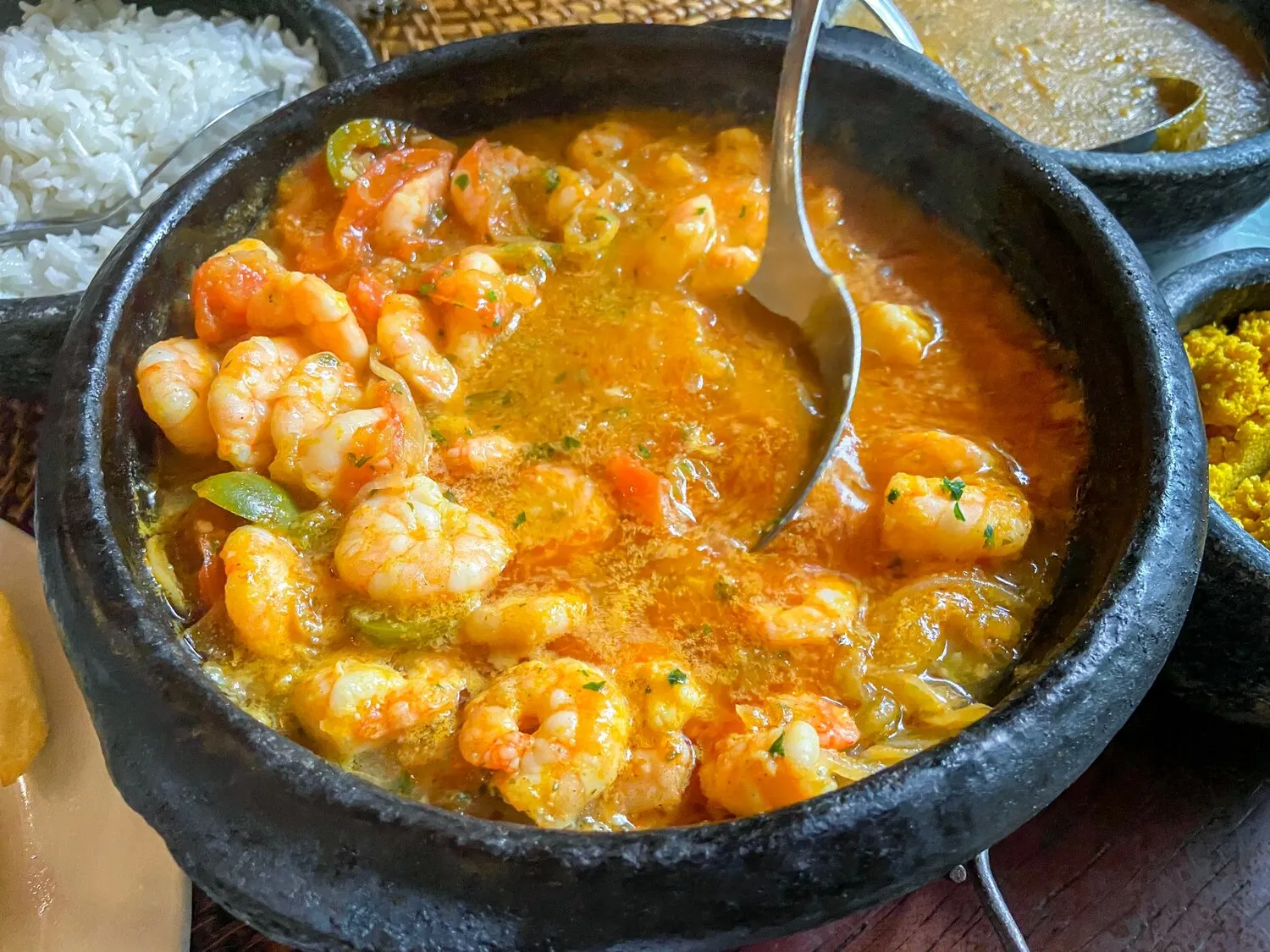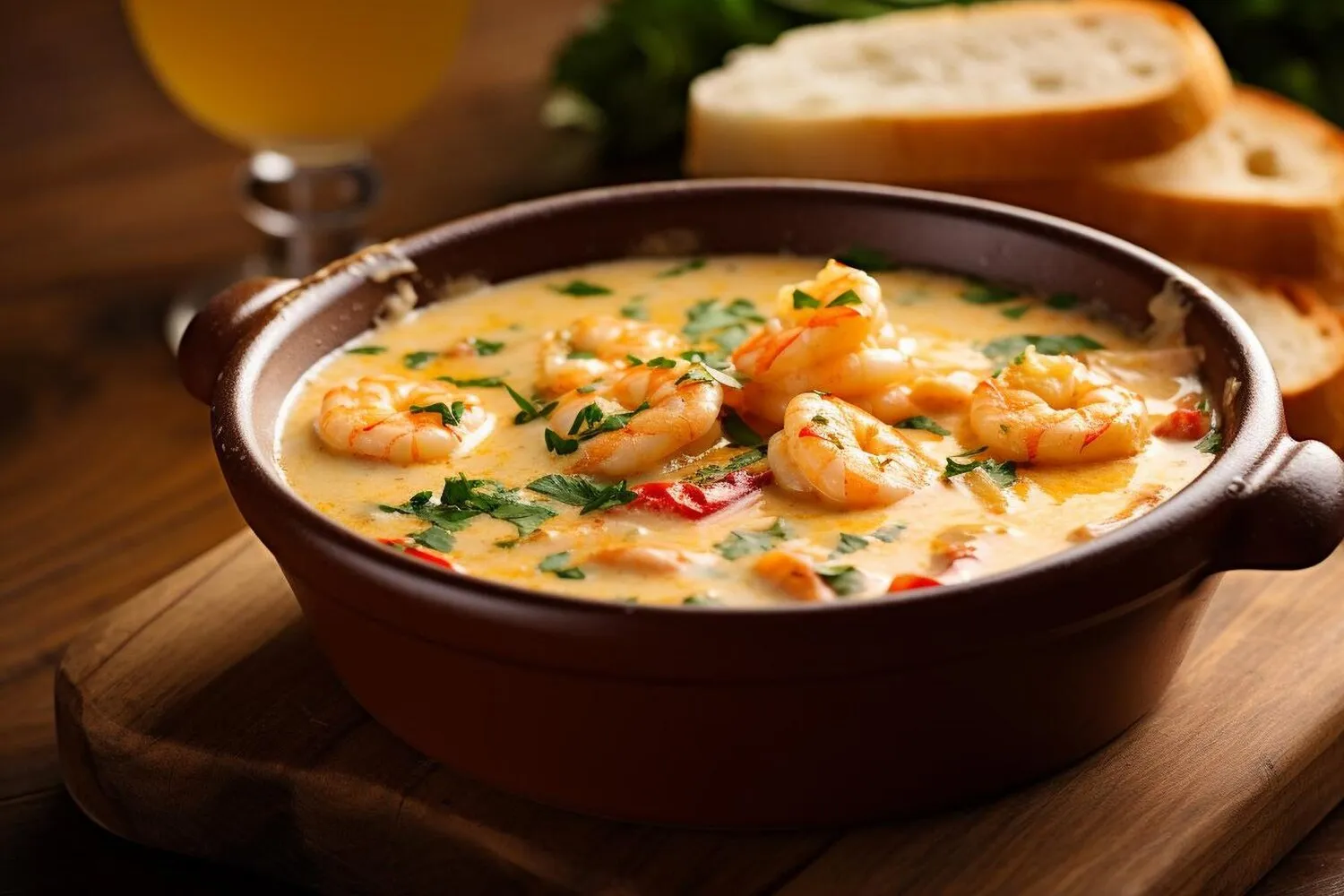
Moqueca de Camarão
Shrimp moqueca, a traditional Brazilian seafood stew cooked in coconut milk, tomatoes, onions, and peppers.
Nutrition Facts
* The % Daily Value (DV) tells you how much a nutrient in a serving of food contributes to a daily diet. 2,000 calories a day is used for general nutrition advice.
Flor do Maracujá
Moqueca's history is rooted in the indigenous tribes of Brazil, who cooked fish and shellfish in clay pots. African influences, brought by enslaved people, introduced ingredients like coconut milk, dendê oil (palm oil), and peppers, shaping the dish into its modern form. Portuguese colonizers also contributed with techniques and ingredients, further enriching the stew's culinary heritage.
Moqueca is more than just a dish; it's a symbol of Brazilian coastal culture, representing community, family gatherings, and the bounty of the sea. It’s deeply intertwined with regional identities, particularly in the states of Bahia and Espírito Santo.
Regional Variations
Two main variations exist: Moqueca Baiana (from Bahia) and Moqueca Capixaba (from Espírito Santo). The key difference lies in the use of dendê oil; Baiana uses it, while Capixaba doesn't. The style represents pride for the respective regions.
Family Tradition
Moqueca is often prepared for special occasions and family meals, emphasizing the importance of sharing and togetherness. Recipes are passed down through generations, with each family adding their unique touch.
Celebrations
In coastal towns, moqueca is frequently served at festivals and celebrations, connecting the dish to the area's rich maritime history and cultural identity.
Moqueca de Camarão offers a vibrant blend of sweet, savory, and slightly spicy flavors, harmonizing the natural sweetness of shrimp with the richness of coconut milk and the tang of tomatoes.
The predominant flavors are those of sweet shrimp, creamy coconut milk, tangy tomatoes and onions, and a subtle heat from chili peppers. Cilantro adds a fresh, herbaceous note. Dendê oil (palm oil), used primarily in the Moqueca Baiana variation, provides a distinctive reddish hue and a slightly earthy, nutty flavor that distinguishes it from the Moqueca Capixaba which doesn't traditionally use it.
Freshness is Key
Use the freshest shrimp possible for the best flavor and texture. Look for firm, translucent shrimp with a clean, sea-like smell.
Don't Overcook the Shrimp
Shrimp cooks quickly, so be careful not to overcook it, or it will become rubbery. Add it towards the end of the cooking process and cook until it turns pink and opaque.
Low and Slow
Simmer the moqueca gently over low heat to allow the flavors to meld together without burning the ingredients.
Proper Pot
Traditionally, moqueca is prepared in a clay pot (panela de barro), which imparts a unique earthy flavor. If you don't have one, a heavy-bottomed pot will work well.
Explore additional Brazilian Seafood dishes and restaurants
Explore Brazilian SeafoodDiscover top dining spots and culinary experiences in Feira de Santana.
Explore Feira de SantanaLearn more about the food culture, restaurant scene, and culinary heritage of Brazil.
Explore Brazil
